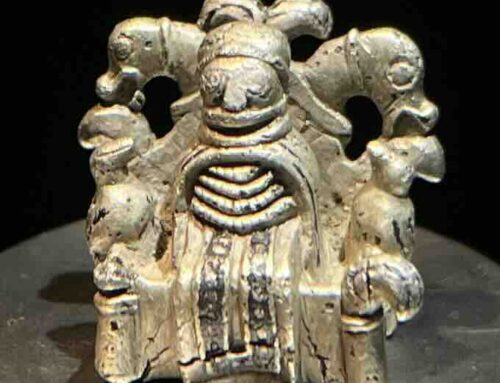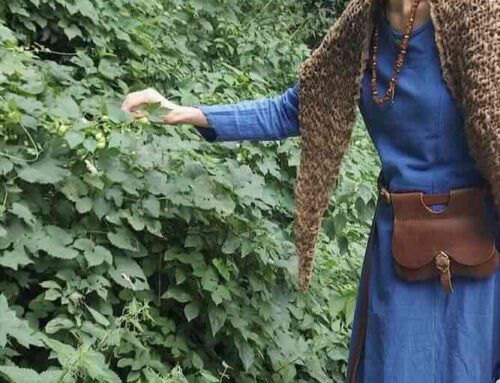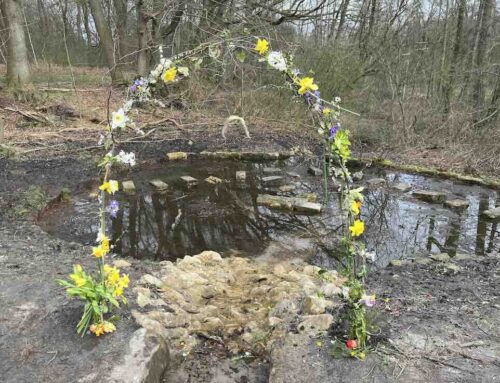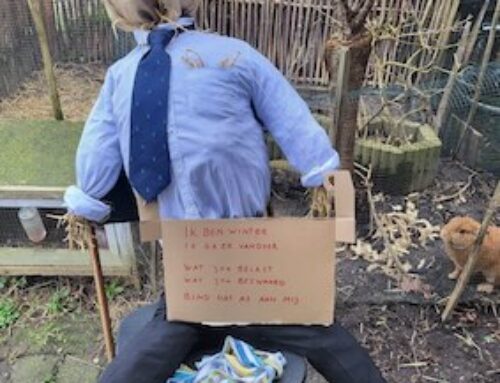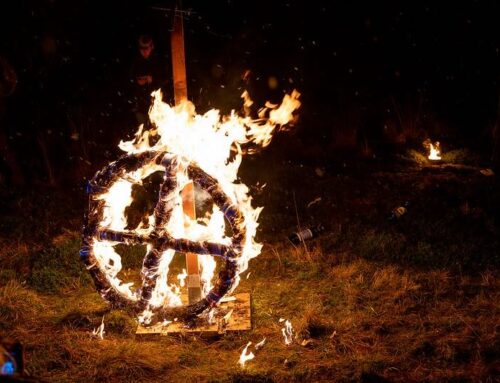Almost happy weekend! How are you? I hope you received an empowering Supermoon Eclipse on Wednesday? I will be sharing my experience and personal tarot reading I did that day, at a later time. I am pretty busy on weekdays, so not much time to blog, will catch up though.
First I want to share about last weekend’s 3-day mini-holiday in Markelo, Overijssel.
My photographs can be found here on Flickr.

Markelo
Last weekend, Friday, my friend Karina and I took the train to Markelo in the Province of Overijssel. Now Overijssel is a beautiful area and I have fond memories of camping there with my parents. This weekend however we wouldn’t rough it and stay at a lovely and comfortable B&B, called De Bolderie. We stayed in a refurbished horse stable and the farm is located 7 km outside of Markelo, so it was wonderfully quiet and peaceful, with an amazing view.
“Wijde verten schone dreven,
mooi luchten hoog verheven.
Pracht van heuvels vijf in tal,
natuurschoon is er overal.
Gele akkers, groene weiden,
met de Schipbeek als een lint.
Dat met goed verzorgde wegen,
Twente en Salland saam verbind.
Ja, in dat kleine dorpje,
daar in dat Twente land.
Door traditie goed geborgen,
smeden wij een sterke band.
Wij zijn van goede wille saam,
houden hoog steeds onze naam.
Markelo ons dierbaar oord,
Markelo dat ons hart bekoord.
De oude toren laat zich horen,
zij bij vreugde of bij leed.
Elk van ons die kent zijn klank,
houdt zich als steeds voor hulp gereed.
Moederspraak en kinderplichten,
binden ons hier met de grond.
Heerlijk is het hier te wonen,
daar waar eens mijn wieg op stond.”
– Markelo’s volkslied/folk song
De Twentse Wallen
Dropping off our backpacks we left for lunch in town, after about 70 minutes walk we arrived and found a spot on the recently re-opened terrace of a local cafe. In The Netherlands, restaurants are still closed, though now eating and drinking outside is allowed again. Now this is fine, would it be if The Netherlands is a sunny and warm place, it isn’t though as it was still around 12 degrees Celsius and raining a lot. Fortunately sitting down, we were lucky as the rain stopped for a bit, so we enjoyed a wonderful filling and warming Asparagus-soup before heading out for a walk around the area.
This walk has been called the most beautiful walk of the Netherlands in 2018 and is called ‘De Twentse Wallen’. Starting at the Markelose ‘Berg’ (a ‘Dutch Mountain’ of 40 meters) with along the walking path we come to the Resistance fighter monument. It represents three pages from a book, where the civilian, the woman and the soldier are honored.
From the Markelose Berg it is easy to see that there are several hills in the area. These ridges were pushed up during two ice age. The walk is named after these moraines, ‘de wallen’. Meanwhile it started raining again, not a little drizzle, but the clouds opened and soaked us. We make a rushed crossing between the fields to the Kattenberg. There too the memory of the Second World War is kept alive. We walk through old trenches, some of which have recently been dug out to their full depth. We follow the river Schipbeek and suddenly we find ourselves in a very different landscape and this is what makes this walk so attractive, for instance we also walk through farming villages, such as the hamlet Stokkum. We see beautiful historic farmhouses, some of which have been given monumental status. Part of Stokkum is designated as a protected village and you can tell. We walk between farms and cross into the cropland as this landscape has little bits of forest between the fields. Or I feel it is the other way around and fields made in the forest.

In any case, it is wonderfully varied. We suddenly find ourselves standing at a hiding place where 6 family members of the Jewish family Hoek lived for almost 2 years and they survived the war because of this. It is hard to believe people living in this tiny, cold, dark place. Shivers run down my spine.

And then just like that we find ourselves back in Markelo again, time for a wonderful glass of wine and a tasty dinner, it’s been so long since I have last been literally out to eat and it tastes so good. Satisfied and happy we walked backed to the B&B, we almost walked 30 km in total, the sun carefully peaking through the clouds, creating a dreamlike landscape and I sense we are moving through time. We slept like roses in the super comfortable bed, replenishing for another hike the next day.
Luilak
Today is Luilak in The Netherlands. Luilak or Looilak is a folkloric celebration on the Saturday before Pentecost, especially in the provinces of Holland, a lot of noise is made in the early morning hours. I remember the excitement as a child when in early morning motorcycles without exhausts would ride through the village I grew up in. It is generally assumed that it is a celebration with Frisian origins scaring away the last remnants of the winter cold, I so hope this is true as I am yearning to feel the sun warm my skin. So after a wonderful homely breakfast, we were dropped off by the B&B owner at the entrance of De Borkeld to spare us the first 7 km walk, and we could start fresh … and dry as the heavy rains of yesterday were now exchanged for what seemed non-stop drizzle.
The Borkeld is a varied nature reserve between Holten, Rijssen and Markelo. You will find the largest juniper bushes in the Netherlands here. But De Borkeld is also an archaeological reserve. For example, hunters left their stone tools here some 13 thousand years ago. Settlements and burial mounds have also been found that are between 4000 and 6000 years old.

Here we met Swezas who guide walks throughout The Netherlands. Axnot and Lianne of Swezas “thoroughly examine the land on which our sacred house is built, they examine what we have inherited or perhaps lost, they examine language, customs and lore and everything else. They love to do this and it gives them the feeling of experiencing ancient riches again.” And exploring my own roots has been something I am deepening over the years, from a lifetime of learning about Ancient Egyptian religion, Hellenistic religion, Mithraism, Gnosticism, Haitian Vodou, Santería and Espiritu religion, it is now time to come home. And with Covid this yearning to connect to this land has profoundly deepened. I am consciously seeking out the spirit of place and honor and look to connect with her. Swezas are great guides on this journey. It is a shame they live too far away, and I don’t have a car, to join their regular meetings and festivals, but I make an effort to join their guided walks and read about their work.

Today Axnot told us about the different ways in which sacred pre-Christian places could arise and how both the gods and man had something to do in this. We saw several burial mounds and finally arrived at the Friezenberg, linked to the god Freij. He spoke of ‘ongelijksoortige’ plekken, dissimilar/disparate places (?) we visited throughout the day. After a special stone formation called Harago (etymologically, the word is associated with *har- ‘ridge, height’. Germ. harh- and harg- . It is debatable whether the Scandinavian word and also its South Germanic equivalents originally had a cultic meaning. Rather, it is a terrain designation: ‘stone heap, rock’). We also visit a remnant of a hunebed (a Neolithic tomb consisting of two or more upright stones with a capstone) and hefty burial mounds, we arrived at the Friezenberg, the main destination of the day and certainly one of the most disparate places in our country.

Some 13,000 years ago, the first humans on Markelo’s territory; hunters and food gatherers who temporarily stayed in so-called encampments. About 6,000 years ago, itinerant groups settled here as farmers. The oldest settlement consisted of a dozen farms and, according to experts, was one of the oldest in the Netherlands. According to experts, it was one of the oldest in the Netherlands above the great rivers. The Friezenberg, already a sacred mountain from ancient times, which can be seen only from how eagerly people wanted to be buried near it: around it lie numerous burial mounds and entire urn fields, and on its summit lies even the largest mound, which is even up to our time the center of sagas as the people still pass them on. They tell about Derk with the bear. The fertility god is still not called by his real name out of awe. We too entered this mountain with reverence, a striking cone-shaped mountain in an otherwise fairly flat landscape and then on top of it an enormous burial mound you will find nowhere else.
The last disparate spot in the landscape that we visited was the labyrinth at the sheepfold of ‘t Borkeld. Since time immemorial, labyrinths have captured our imagination, on all continents and in all cultures. Always they are resting points in our hectic existence. This
Labyrinth is related to sun, moon and stars and to the summer and winter solstices. A unique place, where culture and nature come together. Here Lianne and Axnot shared about Spring customs and especially Pentecost customs in which Trojaburgen (man-made stone formations in the form of a labyrinth), made of loose stones often play a role. We also played a game where fate decided which of us would be the May Queen and the May King. The May Queen was the one who drew the birch leaf from a box, the Queen then had to go to the center of the labyrinth. All the men also had to enter the labyrinth one by one after they had all been given a leaf in their hand without knowing which one, so therefor not knowing whether they were to become King.

After this playful ceremony it was time to walk back to the entrance and say our goodbyes. Karina and I were kindly dropped off in the centre of Markelo where we found a spot on a terrace of a cafe and treated ourselves to warm tea and a local drink called Twentsch Kuiernat. An appropriate name as it means something like ‘wandering/walking wet’ and yes we were soaked after walking. We visited the supermarket for a microwave dinner which we would eat back at the B&B. After eating I fell asleep very early, tired and satisfied and I slept non-stop for almost 10 hours straight. Nature and fresh air is so healing and relaxing.
Deventer
In the morning after breakfast we were driven to the train station in Holten and made a brief stopover in the beautiful city of Deventer. As the sun wasn’t out yet and it was rather early, it was quiet and not much to do, so after wandering around, we boarded the train back home.
I am looking forward to our next Swezas walk this Summer, when we will be visiting the oldest oak of the province of Brabant.
I hope you enjoyed this little tour of The Netherlands. Thank you for visiting and I hope to meet you again.


